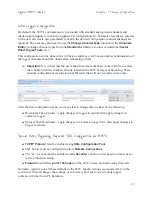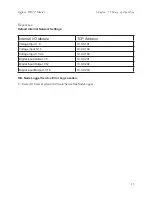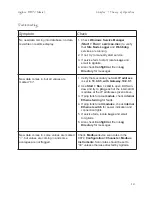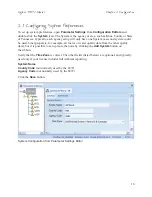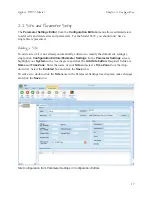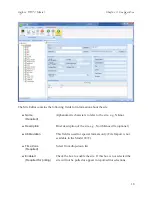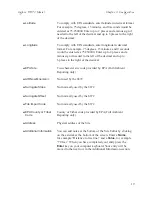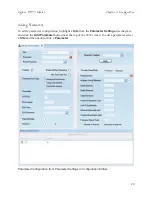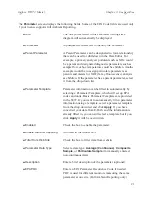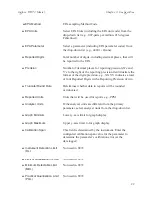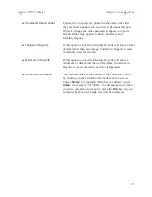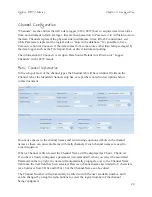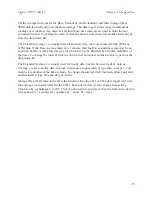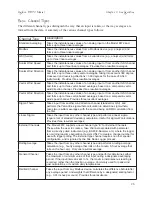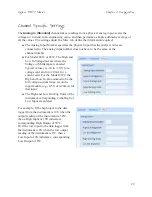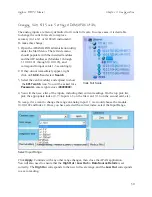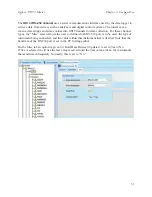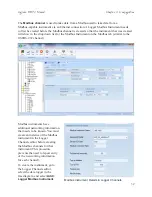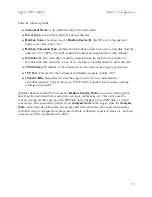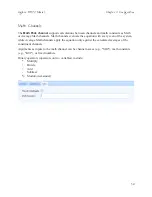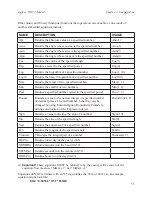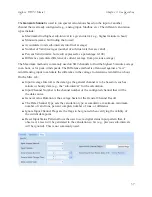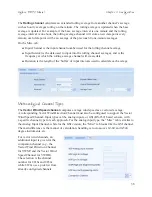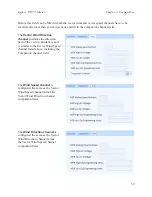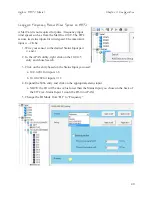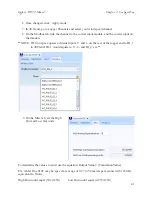
26
Basic Channel Types
The different channel types distinguish the way that an input is taken, or the way averages are
formed from the data. A summary of the various channel types follows:
General Channel
Takes the input from any other channel type and performs determines either
the maximum or minimum value of that input during a designated averaging
period. If the input interval is set to 1s, the max/min instantaneous reading is
recorded, rather than the max/min average. Commonly used for peak wind
gust calculations, or max/min daily temperatures.
Rainfall Channel
Takes the input from any Modbus device, calculates the difference before/after
any average period, and weights that difference by a designated scaling factor
(e.g., 0.01 inches per count). Provides three resultants.
Channel Type
Description
Standard Averaging
Takes the instantaneous values of an analog input on the Model 8872 and
forms up to three linear averages.
Modbus
Takes the instantaneous values from a Modbus device (e.g., analyzer) and
forms up to three linear averages.
GSI (Serial)
Takes the instantaneous values from a serial device (e.g., analyzer) and forms
up to three linear averages.
Scalar Wind Speed
Takes the instantaneous values of an analog input or from another GSI channel
and forms up to three linear averages. Provides three resultant averages.
Scalar Wind Direction Takes the instantaneous values of an analog input or from another GSI channel
and forms up to three unitary vector averages, taking into account 360 degree
crossover (and resolving directions > 360 degrees for the case of 0-540
instruments). Provides three resultant averages.
Vector Wind Speed
Takes the instantaneous values of an analog input or from another GSI channel
and forms up to three vector-based averages, based on a companion vector
wind direction channel. Provides three resultant averages.
Vector Wind Direction Takes the instantaneous values of an analog input or from another GSI channel
and forms up to three vector-based averages, based on a companion vector
wind speed channel. Provides three resultant averages.
Sigma Theta
Takes input from another wind direction channel (standard or GSI) and
performs the Yamartino sigma-theta calculation to determine sigma-theta.
Gives two resultant averages, with the second being an RMS calculation from
the first.
Linear Sigma
Takes the input from any other channel type and performs a linear sigma
(square root of standard deviation) calculation. Useful for sigma-W calculations.
Provides three resultant averages.
External Channels
The Model 8872 supports a new channel type “E” for External Channels.
These allow the user to create a ‘fake’ channel associated with parameter
from a directly polled instrument (e.g., BAM, E-Sampler, etc), where the logger
is not doing real-time acquisition It exists ONLY to create a channel number for
use with logger polling. The External type channel requires no other special
configuration, and is ignored by the Site Node Logger process.
Rolling Average
Takes the input from any other channel type and performs a rolling average
calculation (e.g., hourly average that rolls on the minute, 8-hour average that
rolls on the hour, etc). Only one resultant average.
Agilaire 8872 Manual
Chapter 2 Configuration

